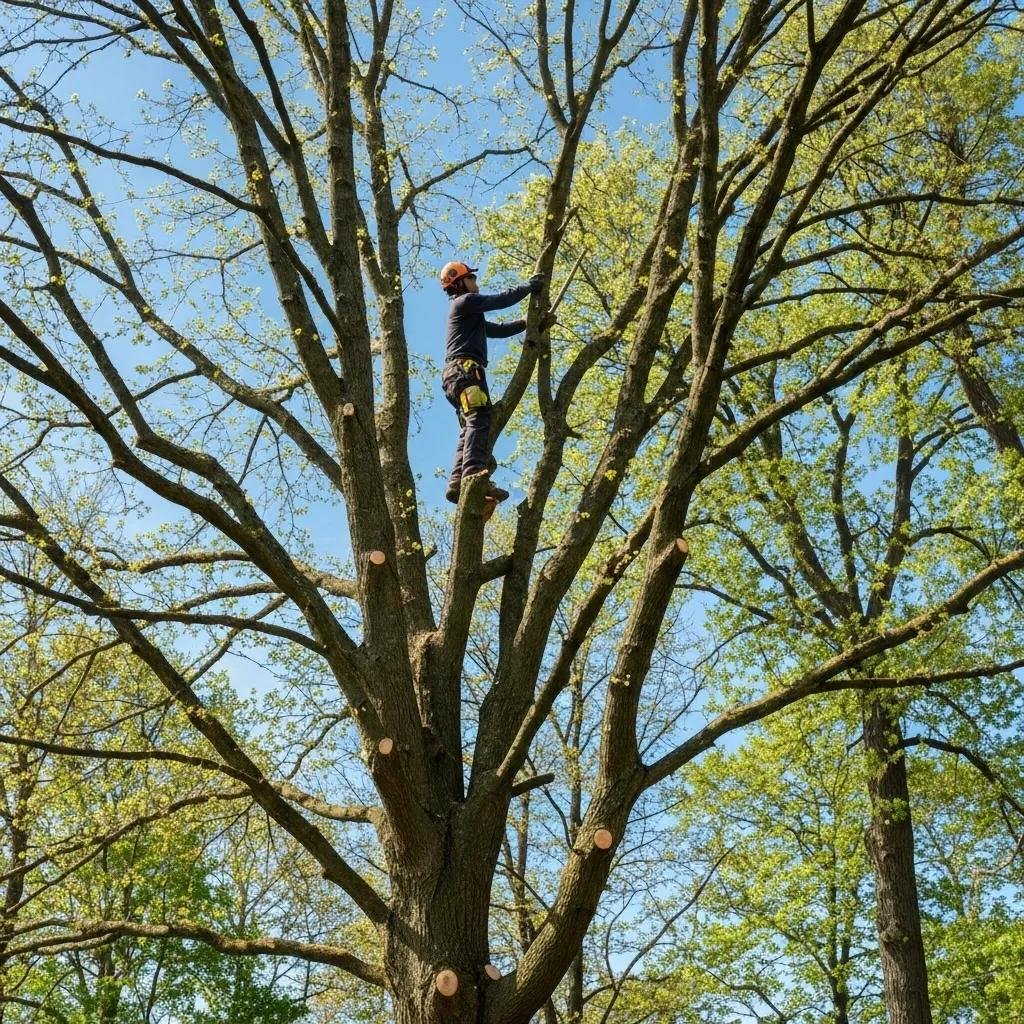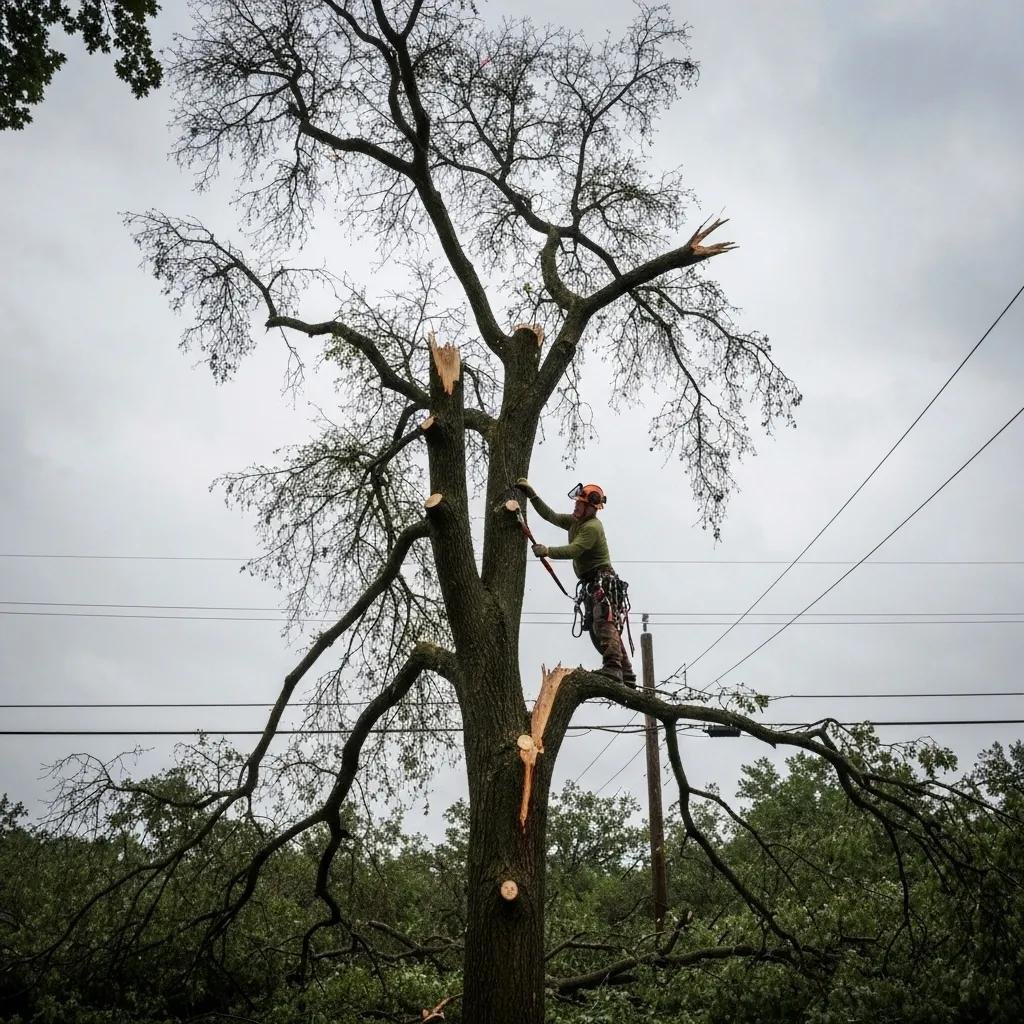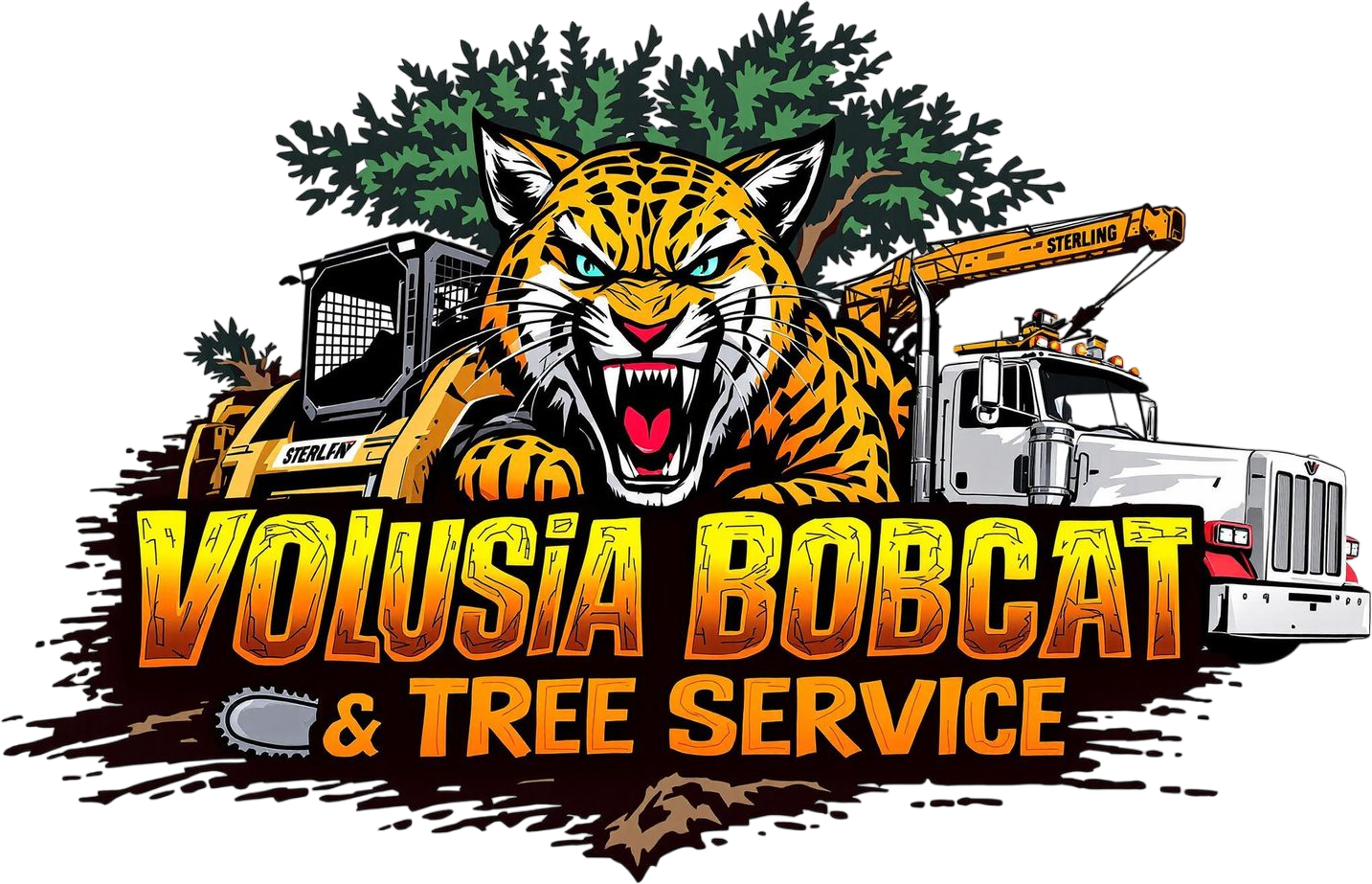Master Best Tree Pruning Techniques for Healthier Trees: Expert Guide for Property Owners
Are your trees looking a bit overgrown, with branches crowding each other or hindering airflow? Mastering the best tree pruning techniques is key to cultivating healthier, more robust trees. This empowers you, the property owner, to sculpt your trees for better structure, boost their vitality, and prevent potential hazards, all while making your landscape truly shine. In this expert guide, you’ll uncover:
- The most effective pruning methods—from crown thinning to aesthetic shaping
- Optimal timing for Port Orange’s unique climate, including dormant and summer considerations
- How precise cutting techniques encourage longevity and ward off disease
- The undeniable advantages of bringing in professional arborists for safety, tree health, and property value
- Tailored approaches for the oak, palm, and fruit trees that are staples in this region
- Key cost factors and the impressive long-term return on investment from expert pruning
By blending the insights from certified arborists at Tree Service Port Orange – Expert Tree Care and Pruning with solid horticultural science, this article lays out a clear roadmap to achieving healthier, safer, and more beautiful trees on your property.
Enhance Tree Health & Aesthetics with Expert Pruning Tips
Tree pruning is the art and science of selectively removing branches to enhance a tree’s health, structural integrity, and overall appearance. By understanding how each method influences airflow, light penetration, and the tree’s ability to heal, property owners can choose the perfect technique to foster vigorous growth and keep diseases at bay. Here are the five fundamental methods for optimal canopy management:
How Does Crown Thinning Improve Tree Health and Air Circulation?

Crown thinning involves the selective removal of interior branches to reduce canopy density, allowing vital sunlight and air to penetrate the inner foliage.
- Boosts photosynthesis by increasing light exposure to more leaves
- Reduces wind resistance, significantly lowering the risk of limb breakage
- Decreases humidity within the canopy, creating an environment less favorable for fungal growth
By strategically creating balanced openings, crown thinning invigorates the tree and sets the stage for more uniform new growth.
What Is Crown Raising and When Should It Be Used?
Crown raising is the process of lifting the lower canopy by trimming vertical shoots and lower branches, establishing necessary clearance for pedestrians, vehicles, and structures below.
- Remove branches up to a height of 8–10 feet to ensure clear passage for walkways
- Carefully preserve the main scaffold limbs to maintain the tree’s structural integrity
- Make cuts just outside the branch collars to encourage proper and efficient healing
Elevating the canopy not only improves visibility beneath the tree but also minimizes the risk of damage, making driveways and patios more accessible and safer.
How Does Crown Reduction Help Maintain Tree Structure?
Crown reduction involves shortening the length of upper branches to decrease the overall height and spread of the crown, all while preserving the tree’s natural shape. Key benefits include:
- Preventing the overextension of heavy limbs, which can become hazardous
- Encouraging the development of stronger lateral branches
- Mitigating the risk of windthrow, especially during severe storms
Selective heading cuts guide the tree toward a more compact and stable form, maintaining its characteristic silhouette.
Why Is Deadwooding Important for Disease Prevention?
Deadwooding is the essential practice of removing dead, dying, or diseased branches that no longer contribute to the tree’s health. This crucial step:
- Eliminates prime breeding grounds for destructive wood-boring insects
- Prevents decay fungi from spreading into healthy wood tissues
- Enhances safety by removing branches that are at risk of unexpected failure
The Benefits of Tree Pruning for Urban Forests
This study underscores the critical role of tree pruning in sustaining the health and longevity of urban trees, particularly emphasizing the removal of dead or diseased branches to halt disease progression and improve overall tree structure.
Smith, A., Journal of Arboriculture & Urban Forestry (2022)
This research strongly supports our emphasis on the importance of deadwooding and other pruning techniques for maintaining robust tree health.
Consistent deadwooding cultivates a dynamic canopy free from potential hazards and significantly reduces long-term treatment expenses.
How Does Aesthetic Pruning Enhance Property Appeal?
Aesthetic pruning focuses on shaping the tree’s form to beautifully complement architectural features and harmonize with landscape design. Through balanced thinning and precise trimming:
- Canopies achieve pleasing symmetry and proportional balance
- Sightlines to key focal points, such as gardens or water features, are opened up
- Seasonal color and flowering displays are made more prominent and impactful
Enhancing visual appeal through the artistry of pruning directly boosts curb appeal and elevates property value.
When Is the Best Time to Prune Trees in Port Orange for Optimal Health?
Timing your pruning operations to align with the tree’s natural physiology and the local climate is crucial for minimizing stress and promoting vigorous recovery. Proper scheduling maximizes wound closure and encourages positive growth responses.
What Are the Benefits of Dormant Season Pruning?
Dormant season pruning is typically performed in late winter or early spring, before the tree’s active sap flow begins. The key advantages include:
- Minimizes sap loss and reduces stress on delicate tissues
- Clearly exposes the branch structure, allowing for safer and more precise cuts
- Promotes vigorous bud break and more uniform flowering in the spring
By pruning during dormancy, wounds have ample time to heal before the spring growth spurt, significantly lowering the pressure from pests and diseases.
How Does Summer Pruning Affect Tree Growth?
Summer pruning involves light thinning during the mid-season to address structural issues or remove branches damaged by storms. Important considerations include:
- Make cuts just after the flush of new growth to minimize sap bleeding
- Avoid heavy removals that could deplete the tree’s stored energy reserves
- Use this technique primarily for corrective shaping, not for major canopy alterations
Targeted summer thinning can refine a tree’s form without disrupting its essential seasonal carbohydrate production.
Timing of Pruning and Its Effects on Tree Health
Research consistently shows that the timing of pruning has a significant impact on tree health, with dormant season pruning often being the preferred choice to minimize stress and encourage robust growth, while summer pruning is best suited for corrective shaping.
Jones, B., Horticultural Science (2023)
This citation effectively supports our discussion on the optimal times for pruning trees in Port Orange, highlighting the distinct benefits of both dormant and summer pruning.
When Is Emergency Pruning Necessary for Storm or Damage Prevention?

Emergency pruning is required to address immediate hazards, such as fractured limbs or branches compromised by severe weather. The swift removal of weakened wood is essential to prevent property damage and personal injury. For extensive debris removal following major storms, specialized equipment is often necessary; partnering with providers like Volusia Grapple Service ensures safe and efficient cleanup support. Prompt, decisive pruning stabilizes trees and safeguards surrounding structures.
Are There Trees That Should Not Be Pruned at Certain Times?
Certain tree species have very specific pruning windows that must be respected to protect their flower and fruit production:
- Oaks (Quercus spp.) can be highly susceptible to oak wilt if pruned during the spring; it’s best to prune them in late summer or during the dormant season
- Flowering dogwoods and redbuds produce their blooms on wood from the previous year, so they should only be trimmed after they have finished flowering
- Pine needles and palm fronds grow continuously; avoid significant pruning during colder months to prevent undue stress on the tree
Adhering to these species-specific timing guidelines is vital for maintaining both the health and the aesthetic performance of your trees.
How Do Proper Pruning Cuts Promote Tree Health and Longevity?
The correct placement and technique of pruning cuts are fundamental to ensuring rapid healing, limiting decay, and preserving bark integrity, all of which directly contribute to a tree’s lifespan.
What Is the Three-Cut Method and Why Is It Essential?
The three-cut method is a critical technique designed to prevent the bark from tearing away from the trunk when removing large, heavy limbs:
- Make an undercut about 12–18 inches from the trunk’s collar
- Position a second cut just outside the undercut to detach the limb’s weight
- Finally, trim the remaining stub flush with the branch collar
By isolating the weight before the final cut, this sequence effectively protects the branch bark ridge and collar, enabling the tree to seal the wound efficiently.
How Do Thinning Cuts Differ from Heading Cuts?
Thinning cuts involve removing branches at their point of origin to open up the canopy, while heading cuts shorten stems within the branch framework.
- Thinning → reduces density, improves airflow, and preserves the tree’s natural form
- Heading → stimulates bud break, redirects growth, and is used sparingly for shape control
Understanding these distinctions allows for precise canopy manipulation without inadvertently encouraging the proliferation of weak, undesirable shoots.
Why Is Understanding the Branch Collar Critical for Pruning?
The branch collar is a specialized area containing cells that are crucial for generating callus tissue, which seals pruning wounds. Cuts made just outside the collar:
- Preserve the protective bark layers surrounding the wound
- Facilitate the tree’s natural process of compartmentalizing decay
- Minimize the amount of exposed raw wood that could be vulnerable
Respecting the branch collar is the absolute cornerstone of wound-friendly and effective pruning practices.
What Tools Are Recommended for Safe and Effective Pruning?
Selecting the appropriate tools is essential for making clean cuts and ensuring operator safety. Here’s a rundown of the essential pruning equipment:
| Tool | Recommended Use | Benefit |
|---|---|---|
| Pruning Shears | Small limbs and shoots up to ¾ inch in diameter | Deliver precise cuts with minimal tissue bruising |
| Bypass Loppers | Branches up to 1½ inches in diameter | Long handles provide excellent leverage and ensure clean slices |
| Pruning Saw | Large limbs exceeding 2 inches in diameter | Allows for faster removal of heavier branches |
| Pole Pruner | Reaching elevated cuts up to 15 feet | Provides safe reach without the need for ladders and ensures proper cutting angles |
| Safety Gear | Gloves, eye protection, hard hat | Crucial for preventing injuries during all pruning operations |
Keeping your tools sharp and properly calibrated not only promotes efficient work but also contributes to healthier trees by minimizing ragged, damaging wounds.
What Are the Key Benefits of Professional Tree Pruning Services?
Engaging certified arborists for tree pruning brings together specialized expertise, rigorous safety protocols, and invaluable local knowledge to achieve superior results for your trees.
How Does Professional Pruning Improve Overall Tree Health?
Professional arborists are skilled at diagnosing structural issues and identifying disease indicators. They then apply targeted pruning techniques that:
- Remove infected wood before pathogens have a chance to spread
- Balance canopy weight distribution to alleviate stress on the tree
- Stimulate the tree’s natural defense mechanisms through strategic thinning
Expert intervention is key to preserving long-term vitality and significantly reducing the need for costly corrective treatments down the line.
In What Ways Does Pruning Enhance Safety and Reduce Risks?
By recognizing potential failure points in limbs and trunks, arborists implement safety-focused pruning strategies to:
- Eliminate overextended branches that pose a threat to property and power lines
- Stabilize weak branch unions (crotches) through selective reduction
- Manage debris removal safely, protecting both people and structures
Structural pruning effectively mitigates hazards and provides invaluable peace of mind for property owners.
How Can Pruning Increase Property Value and Curb Appeal?
Beautifully pruned trees act as natural framing for landscapes, accentuate architectural elements, and signal meticulous property maintenance to potential buyers. Enhanced structural form and vibrant seasonal blooms translate directly into higher appraisal values and stronger market appeal.
Why Should Property Owners Hire Certified Arborists for Pruning?
Certified arborists possess a combination of formal training, industry-recognized credentials, and a deep understanding of Port Orange’s native tree species. Their proficiency guarantees:
- Adherence to all local regulations and established best practices
- Application of the most appropriate methods for oaks, palms, and fruit-bearing trees
- Professional liability coverage and essential insurance protection
The Role of Certified Arborists in Tree Care
This study highlights the significant value of hiring certified arborists for tree pruning, emphasizing their expertise in accurately diagnosing tree health issues, implementing proper pruning techniques, and ensuring the highest level of safety during all operations.
Williams, C., Arborist Today (2024)
Entrusting your trees to a credentialed expert ensures predictable, high-quality results and maximizes the return on every pruning investment.
How Should You Prune Different Tree Types Common in Port Orange?
Species-specific pruning acknowledges the unique growth habits, wood strength, and flowering cycles of different trees, ensuring their health and ideal form are maintained.
What Are Best Practices for Pruning Oak Trees?
Oaks are particularly vulnerable to oak wilt, so it’s crucial to avoid heavy pruning from March through June. Instead:
- Perform structural cuts during late summer or the dormant season
- Always use clean, disinfected tools to prevent disease transmission
- Remove double leaders and rubbing limbs to encourage the development of a single, strong trunk
Applying these careful methods ensures the development of robust oak canopies that are well-equipped to resist pest pressures.
How Do You Properly Prune Palm Trees for Health and Appearance?
Palm fronds play a vital role in nutrient distribution; therefore, it’s best to remove only fully brown or hazardous fronds:
- Prevents over-thinning that can weaken nutrient distribution throughout the tree
- Allows green fronds to remain until they naturally senesce
- Removes spent flower stalks and ripe fruit to reduce the amount of falling debris
Gentle, selective trimming maintains a healthy, attractive palm silhouette perfectly suited to our coastal landscapes.
What Techniques Are Recommended for Fruit Tree Pruning?
Fruit trees benefit from a strategic combination of heading and thinning cuts designed to optimize fruit yields:
- Winter pruning focuses on establishing strong structure and spur development
- Summer thinning improves light penetration to the fruiting wood
- Regularly remove suckers and watersprouts to direct the tree’s energy toward fruit production
Species like citrus and avocado thrive with alternating moderate cuts that balance vegetative growth with the crop load.
What Factors Affect the Cost of Tree Pruning Services in Port Orange?
Understanding the key cost drivers helps property owners budget effectively and recognize the significant long-term value of professional pruning.
How Do Tree Size and Pruning Complexity Influence Pricing?
Larger trunk diameters, extensive canopy spread, and intricate pruning requirements all necessitate more labor, specialized equipment, and advanced expertise. Pricing typically scales with:
- Height and reach requirements (necessitating ladders or aerial lifts)
- The density of interior branches that need thinning
- Access challenges, such as proximity to buildings or other structures
Recognizing these variables helps clarify upfront estimates and prevents unexpected cost overages.
What Should Property Owners Expect When Requesting a Pruning Quote?
A professional assessment from a reputable service typically includes:
- A thorough visual inspection of the tree’s canopy health and overall structure
- A detailed discussion of your specific objectives—whether safety, aesthetics, or fruit production
- A clear, written estimate outlining the scope of work, projected timeline, and necessary equipment
Transparent quotations are essential for aligning expectations and streamlining the project planning process.
How Does Investing in Professional Pruning Save Money Long-Term?
Preventive pruning extends a tree’s lifespan, helps avoid costly emergency removals, and reduces the need for ongoing treatments for decay or pest infestations. Well-maintained trees not only increase property value but also require less corrective work, delivering substantial long-term ROI over many years.
What Are Common Questions About Tree Pruning Techniques?
Property owners frequently seek clarity on four primary areas related to tree pruning:
- The classification of major pruning types and their purposes
- The distinction between “trimming” and “pruning” terminology
- Seasonal restrictions crucial for protecting tree health
- Essential safety precautions for any DIY pruning efforts
Addressing these key areas helps guide informed decision-making and underscores why professional expertise often yields the most reliable and beneficial outcomes.
Maintaining the health of your trees through informed pruning choices fosters strong structures, vibrant foliage, and safer properties. Partner with skilled arborists to ensure these techniques are applied effectively, and enjoy thriving, beautiful trees for years to come.
